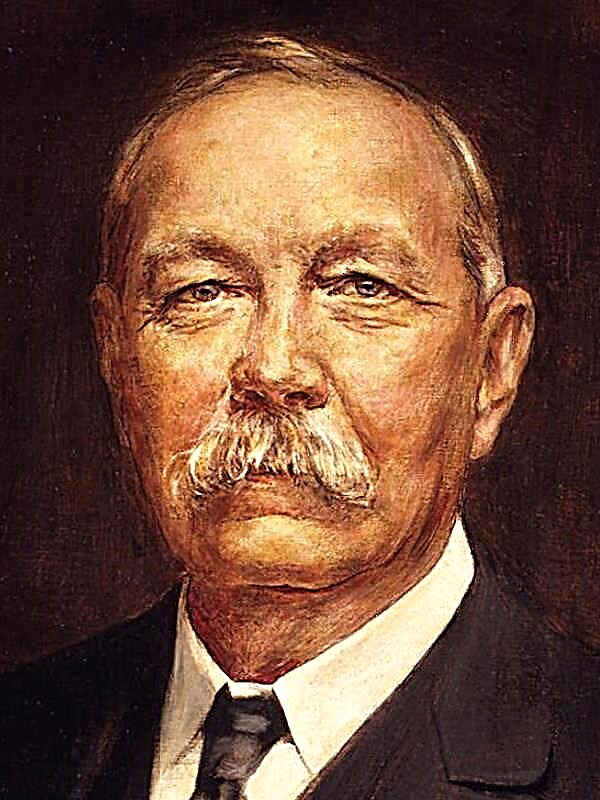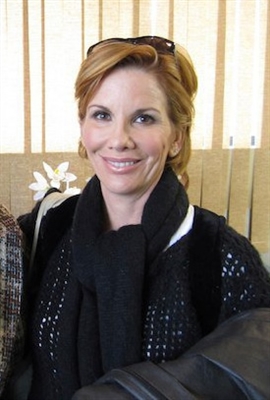Rest: how not to turn into a “driven horse”
Establish a competent rest during the working day and after hours. For example, 5 minutes every hour.
During the rest, distract yourself to better restore strength. Instead of surfing the Internet, take a walk or do some exercises.
Make laziness creative. During periods of laziness, load the brain with information on an important creative topic for you and be 100% lazy, not trying to solve problems and not tormented by remorse.
Increase sleep efficiency by falling asleep and waking up according to the regime and optimizing its duration. Our sleep consists of several cycles lasting 1-1.5 hours. When the duration of sleep is a multiple of the length of the cycle, waking up is much easier. Before going to bed, ventilate the room, do not bother yourself and unload the brain from daytime worries - take a walk or read an art book.
Use "micro-sleep" during the working day. Human biorhythms have two ups and downs during the day. The first decline occurs around 13-15 hours, the second - in the evening. If you rest 10-15 minutes during the first recession, the work will go much more efficiently.
Motivation: how to cope with unpleasant tasks
To quickly complete complex and unpleasant tasks, learn to tune in to them using "anchors", material bindings - music, colors, rituals. But do not use the “anchor” associated with work on vacation.
Use the “Swiss cheese method” - do the task not in a logical order, but in an arbitrary way. After a while, so many holes form in the “cheese” that it will be very easy to “eat” it.
Break the task into several parts and encourage yourself by completing one part. Eat at least one “frog” daily - complete a simple but unpleasant task. Typically, such tasks accumulate and become a problem. If you decide one of them every morning, then they will quickly end and provide a good mood for the whole day.
Break the “elephants” (large tasks) into “steaks” (parts). If the task is huge and impossible, divide it into feasible parts. Measure time spent on performing elephant tasks. Fixation of a quantitative indicator pushes a person to action.
“Burn the ships” - create a situation when it is impossible to refuse any task. Such situations allow some types of people to work more efficiently.
Keep a daily affairs table and note completed tasks. Too many gaps on any item will give you an alarm and force you to do the necessary.
Make a pinarik calendar. On the top line, write the years that you lived, in the bottom - the future, and in the rows of the table - the days of the months. Every morning, getting to work, cross out half of the day. In the evening - the second half. This will help you feel the passage of time.
Goals: how to bring dreams closer to reality
Define a mission, articulate personal values and set long-term goals. Instead of a "reactive" approach - a reaction to external circumstances, use a "proactive" - build your life as you wish, actively influence events.
To determine your goals, imagine how you want to see your day in a few years. Try to get rid of the imposed stamps - expensive cars, watches and other attributes - if they are not for you a real value.
Defining values will help the "memoir." Write in it the main events of life. “Memoir” will allow you to create a list of key values and will encourage you to spend a few minutes every day on the issue of the Main.
Formulate a personal mission in the form of an epitaph. What will change in the world and will remain after you when everything is over?
Seek your calling. If we can change the mission, then the calling is not. Vocation is when you realize that, besides you, no one will take this cart out. It can be not only a revolutionary discovery, but also a simple life task.
Identify 5-7 key areas of your life in order to see the general structure and establish harmony of various activities. A map of key areas looks like a tree. Instead of chaos of petty deeds, there are clear branches with leaf deeds.
Chart life goals for key areas and future years to keep track of where and how you are moving. Sometimes it’s hard to understand what you want, but it’s better to make a little mistake and subsequently adjust the plans than to understand after years that time has passed and nothing has been achieved.
Make the closest and most understandable goals measurable using the SMART technique:
- Specific - specific
- Measurable - measurable
- Achievable - reachable
- Realistic - relevant
- Time-bound - time limited
Define clearly what you want and in what time frame, and then express it in monetary terms.
Workday: how to organize it in a fast-paced world
Contextual and medium-term planning according to the “Day - Week” method will help you always meet your deadlines.
Tasks that are difficult to bind to a specific time, suitable contextual approach. For each such task, create a separate diary page or task category in a computerized planning system.
For team work, contextual planning boards are convenient, where projects are listed in rows and team members in columns. At their intersection, tasks are listed. The manager will immediately see the tasks for which the subordinate is responsible, and the issues that need to be discussed.
Tasks with a tight deadline are more efficiently planned for the year, week and day, observing the rules for moving tasks between sections. In the evening, when planning the next day, the section "Week" is viewed. All relevant is transferred to the "Day" section. When planning the next week, the “Year” section is viewed.
This approach allows you not to push yourself into a tight framework and ensures that the desired task will be remembered while viewing the sections "Year" and "Week".
The “Week” section can be supplemented with the following planning tools.
- A list of tasks for the next few weeks on a separate diary page.
- A list of tasks on stickers in a special section of the diary. Looking through the section daily, transfer stickers with “ripened” tasks on the upcoming day in the diary.
- Overview schedule for regular tasks.
- Planning board with tasks for the next few weeks.
- Planning with a list of “flexible” tasks for a week next to a “rigid” time grid or a tab with “flexible” tasks.
The “long-term” section is a “strategic cardboard” with a list of key goals for the next six months to a year. It may contain:
- key events plan for the year;
- deadlines for key projects;
- a list of small tasks with a long deadline that did not fall into the contextual sections of the diary;
- schedule of birthdays, memorable dates, etc.
Similarly to the principle of "Day - Week" you can organize the work of employees on the planning board. To do this, list the employees in the columns, the planning horizons in the rows, and the tasks at their intersection.
To control routine tasks, a table is useful, in the rows of which these matters are listed, and in the columns - the time for which they need to be completed. At intersections, done and undone deeds are noted. Skipping such a task does not play a big role, but a large number of skips will immediately become noticeable.
To accomplish long-term tasks, determine how much time per day will be spent on them and enter them in the weekly plan.To do this, take the total amount of work, labor productivity, and calculate how much time will be spent on the task. Then divide this time into parts and implement them in a weekly plan.
Planning: how to meet deadlines
Set up a personal workday planning system using “hard” and “flexible” tasks. Allow 10 minutes to create a complete picture of the tasks for the day. The plan of the day must be collected in one place and must be in writing. Choose the format and media to your liking. The main thing is that you really like him, and would like to return to him.
During the day, adjust the plan as appropriate. The drawn up plan is not a dogma, it is needed for changeable situations.
Get a “strategic card” with key long-term goals. On the same sheet you can write out tasks that are not tied to a specific day, so that they are always before your eyes; keep a list of current contacts; write out “topics for reflection”, etc.
In terms of the day, separate “hard”, “flexible” and “budgeted” tasks.
- "Hard" - tied to a specific moment.
- “Flexible” - not tied to the exact time.
- “Budgeted” - large and important tasks, time-consuming, which do not have strict deadlines.
Plan hard, then budgeted, then flexible tasks first.
Highlight 2-3 priority tasks in the list and start working with them. Priority cases include urgent and supervising the work of subordinates. Performing tasks in this order will allow you to do the most important things, even if some of the less priority tasks remain unfulfilled.
Plan tough meetings with a reserve of time. Coordinate with partners the accuracy with which you need to come to a meeting.
Stock up on excess information in case everything goes wrong. This will save you time if the partner does not meet you, the recorded mobile will be unavailable, and there will not be a single taxi at the airport at night.
Priorities: how to weed out the excess and find time for the main
Learn to filter out unnecessary things and highlight key tasks. Expand your arsenal of “abandonment strategies” to clear your life of unnecessary things. Accustom others to a solid “no” without explanation.
Use “healthy nonsense” and put off unnecessary business for as long as possible. Often, it simply doesn’t reach their completion.
Buy time by hiring professionals. At the same time, you can not hire permanent assistants, but confine yourself to one-time services.
When giving tasks to subordinates, do not charge them with the obligation to remind you of them. Create an overview of tasks yourself and monitor their implementation.
Use weighted estimates to prioritize tasks. Define the criteria and significance of each of them, so that in total they give 100%. Then evaluate the task according to each of the criteria, multiply the estimates by significance, add and get the final grade. Then sort the tasks by these estimates.
Information: how to control creative chaos
Introduce filtering, storage, and online movement techniques to keep your information under control.
Return to key information more often - write out page numbers, thoughts, make photocopies, draw diagrams.
Put your knowledge into practice, and only then start reading the next book.
Prioritize your reading process - it’s better to carefully read a few key chapters than to run through the entire book superficially.
Filter out information garbage received from the media - try to get only the information you need. Record programs and watch them at a convenient time and without advertising, spend less time in front of a TV or on the Internet.
Use an email that does not require an online presence. You can write, and the addressee read the letter at a convenient time.
Master the method of blind ten-finger printing - you will begin to write quickly and save a lot of time.
Turn off the notification of new mail, which distracts from current affairs. Check your mail 3-4 times a day. Agree with colleagues about a clear inspection time. Set up automatic sorting of e-mail and give it attention in order of priority.
Use email folders as a Day-Week control tool. Distribute letters into thematic folders and leave in the “Inbox” no more than 15-20 of the most important messages.
“Grow” the order in the documentation by the method of limited chaos:
- Create a "place of chaos" - an incoming drive, where all documents are stored.
- Clear the “place of chaos” by selecting the most easily identifiable types of documents, and the “place of order” will begin to form near the place of chaos.
Get a file of thoughts. Accumulated thoughts can combine with each other and give rise to new ones. As you develop any ideas, highlight them in separate directions.
Organize the information space in accordance with the structure of human attention. Consciousness can work with only one object, the preconscious - with 5-9, the subconscious - with an infinite amount. If you bring something closer to the center of your attention, be sure to move something away from it. This will optimally spend your attention.
Select on the desktop an area for 5–9 main current tasks, inbound and outbound drives, contextual trays and control trays according to the “Day - Week” method. At the end of the working day, arrange the documents from the outgoing drive into thematic folders.
Absorbers: how to find time reserves
Use absorber detection techniques to leverage time reserves. Keep track of your time for 2-3 weeks to understand what you spend it on. About once per hour, record all cases with an accuracy of 5-10 minutes. Mark small breaks with check marks in the margins.
Form 2-3 quantitative indicators of efficiency and track them in dynamics. As soon as you begin to visually fix a quantitative indicator, it will begin to change for the better.
Repeat timekeeping periodically in order to stay “in good shape” and correct distortions in your personal time budget in time.
A typical reserve is travel time. Fill transport and travel time with activities that are useful for you.
Have a plan for technical force majeure. The computer has broken down - do what you did not have enough time for. And be sure to back up important data.
Hold meetings more efficiently:
- Define a meeting format and do not mix different formats in one meeting.
- Define the circle of participants, the leader who directs the discussion and the decision maker, and the secretary who draws up the minutes
- make a list of questions for discussion;
- determine the duration of the meeting and appoint a person responsible for the time;
- organize the situation, equipment and distribution of information materials;
- all the issues discussed at the meeting, present in the form of diagrams;
- record and send out the decisions made so that you can return to them at the next meeting.
Remember that the time management system requires continuous improvement.
“TM-Bacillus": how to convey the TM-idea to others
We will not achieve 100% efficiency if we do not coordinate our personal time management with people around us. Bring “TM-Bacillus" to others so that they use time wisely. Calculate the price of your time and fight for it no less rigidly than for money.
Offering TM ideas to your manager, show their usefulness for business, and not comfort for you. Start with tools that are useful and cheap for the chef. Imagine them “in action,” not in theory. Your idea should come to the head’s head itself - this will facilitate its adoption.
Convince subordinates of the effectiveness of time management by personal example. Motivate its use - employees must understand why time is needed and can be managed. Offer new equipment regularly.
Implement TM technology gradually using a minimum of tools. Come up with simple and quick carrots and sticks. Try the techniques on one employee or unit so that everyone sees the real pros and cons.
To implement time management in personal relationships, learn to negotiate. Do not try to impose your preferences on your partner; look for compromises that allow you to take into account the tastes of both sides.
Take time to restore your energy and performance. The obvious for you is sometimes not like that for another person, so clearly explain or write down the principles of relationships.
Offer time management to children in the form of a game, developing a “proactive” approach to life in them.
TM manifesto: from instrument to ideology
The application of time management techniques without an understanding of ideology will allow you to use only a small part of their capabilities. But having understood the ideology of TM, you will learn how to manage your personal time and go to a new level.
Time management is a multi-level system that can change a person’s values. From technical time management, you will move on to thinking about your goals and priorities.
Axioms of time management:
- you always have freedom of choice;
- only you are responsible for your actions and choices;
- without constant development you are just an amoeba.
Even small actions change the world for the better. Develop, move, never stop.












